 Abraham Lincoln
If given the truth, the people can be depended upon to meet any national crisis...
Abraham Lincoln
If given the truth, the people can be depended upon to meet any national crisis...
 Guildford news...
for Guildford people, brought to you by Guildford reporters - Guildford's own news service
Guildford news...
for Guildford people, brought to you by Guildford reporters - Guildford's own news service
Judges Come To Town – Procession Reminds Us Of Our Legal Tradition
Published on: 4 Oct, 2015
Updated on: 6 Oct, 2015

First came a senior police officer, then some officials, then the High Sherriff and behind her the judges – photo Jemima Bond.
The colourful annual judicial procession took place again in Guildford High Street on Friday, October 2. Here we tell the story mainly in pictures.
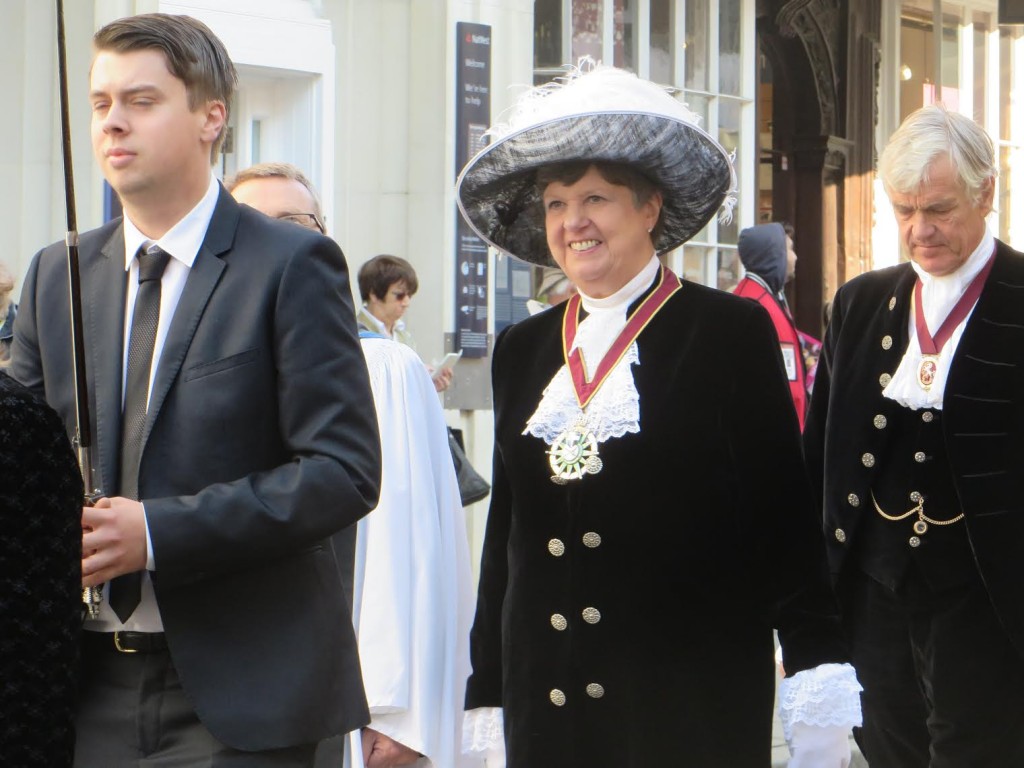
The High Sheriff, Elizabeth Kennedy, is the Queen’s representative to the judiciary in the county – photo Jemima Bond.
This year we are featuring the High Sherriff of Surrey. The following is taken from the Surrey County Council website.
“The High Sheriff of Surrey is appointed by the Queen to hold office for one year. In March, Her Majesty is offered three names in nomination, which have previously been announced in the Royal Courts of Justice. In a ceremony that follows centuries of tradition, Her Majesty uses a brass bodkin to ‘prick’ the name of the High Sheriff for the following year (April to April).
“The High Sheriff is The Queen’s representative of the Judiciary in the County. In practice today it is largely a ceremonial role but still the oldest secular office in England and Wales other than the Crown. It dates back to Saxon times, more than 1,000 years ago, when the name was ‘Shire Reeve’.
“At that time the Sheriff was appointed to look after the King’s interests in the County and had extensive powers to enforce law and order and collect taxes. Sheriffs are mentioned throughout the Magna Carta and were clearly fundamental to the running of the shires. Many of the original powers are now taken by the Lord Lieutenant, High Court Judges, Magistrates, Coroners, local authorities, the Inland Revenue and Police.”
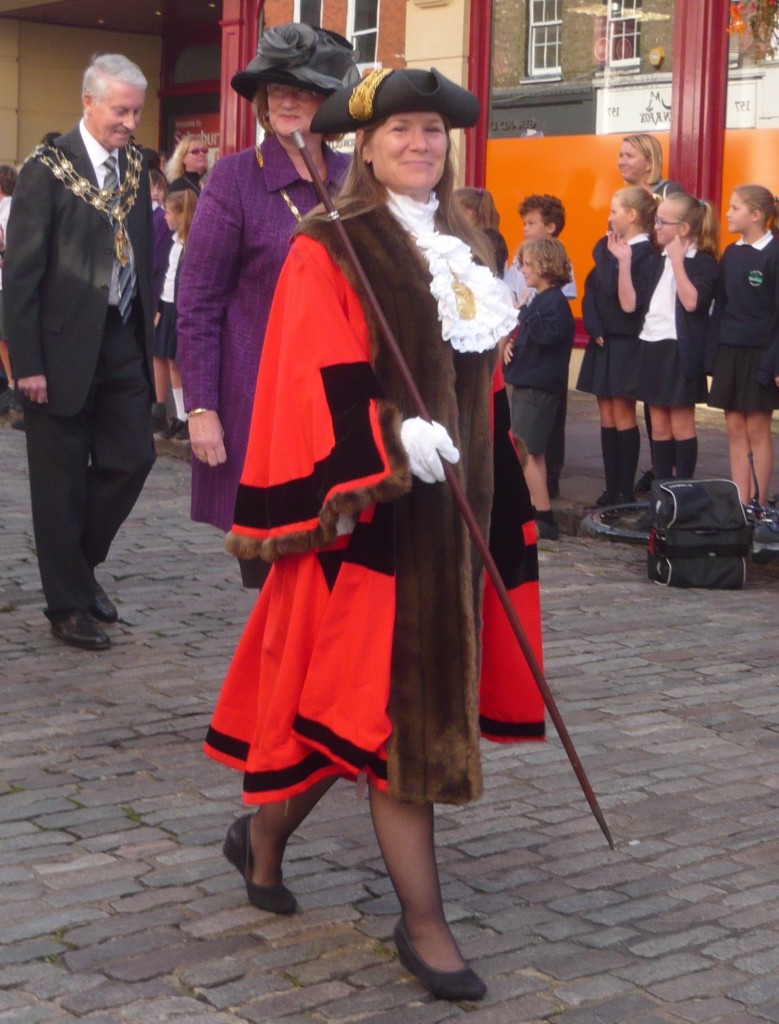
Looking as proud as punch, (and why not?) at the front of the civic contingent the Mayor of Guildford, Nikki Nelson-Smith.
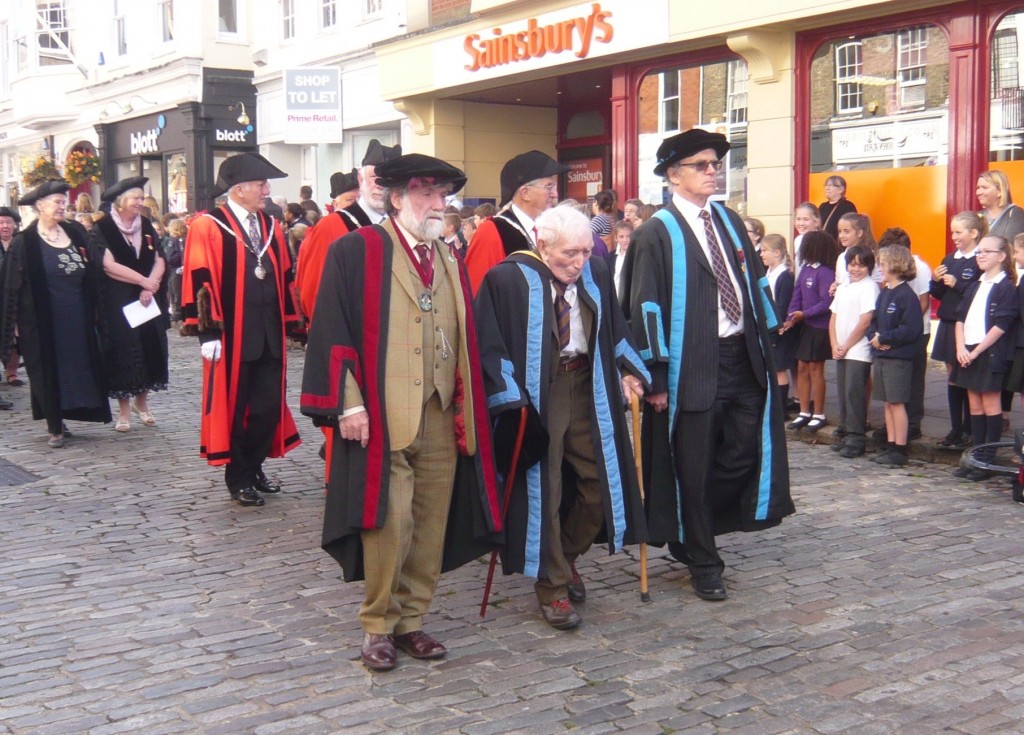
Guildford’s most senior citizen Freeman Bill Bellerby, flanked by Freeman Andrew Hodges and in the tweed suit the Remembrancer Matthew Alexander. Behind them in the red robes are the aldermen.
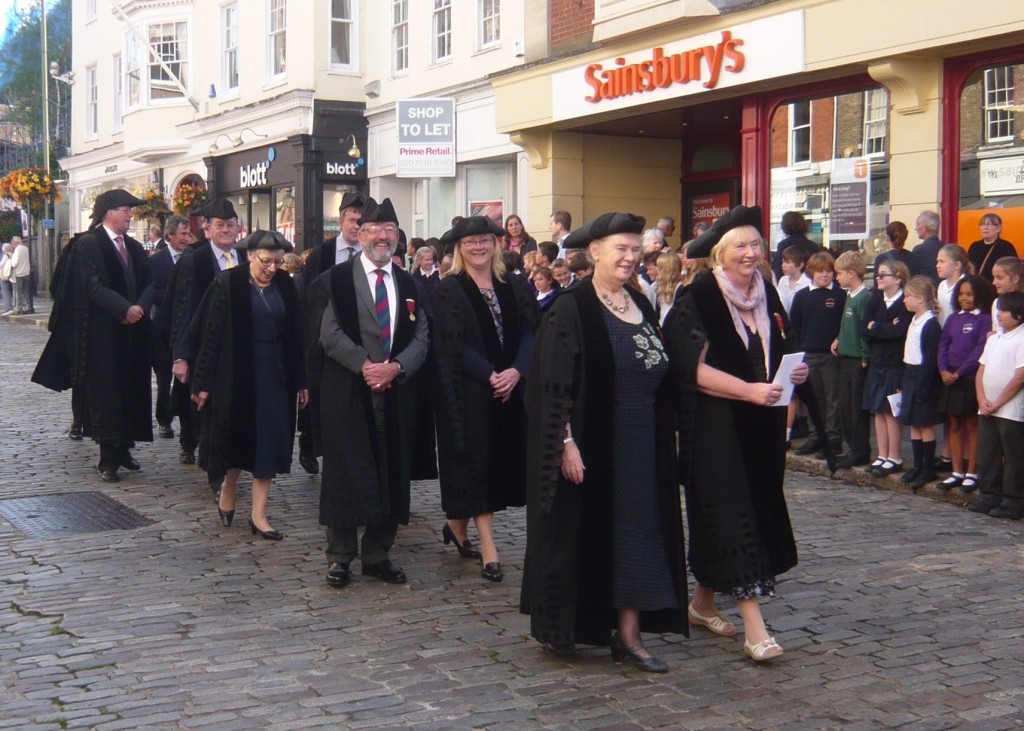
Bringing up the rear are the serving councillors in their black robes. Front left Cllr Jenny Jordan, next to her Cllr Pauline Searle. Behind them Cllr David Elms and Cllr Angela Goodwin. In the background schoolchildren from Holy Trinity School.
Matthew Alexander, Guildford’s honorary remembrancer, who took part in the procession, has kindly provided this short account of the cermoney’s history (as previously published):
The annual judiciary service has its origins in the service held to mark the opening of the assizes, the medieval criminal courts in which serious offences were tried by the Crown’s itinerant judges. These judges travelled around ‘circuits’ of counties.
The High Sheriff of Surrey, traditionally leads the judicial section of the procession
The central courts were based in London, and the counties around London formed the ‘home’ circuit. Surrey thus became one of the ‘home counties’. Guildford was one the towns in Surrey where the assizes were held. In Georgian times the High Sheriff often entertained the judges at the home of the town clerk of Guildford, now known as Guildford House.
The grand first-floor room overlooking the High Street became known as ‘the Sheriff’s Parlour’. At that time, there were relatively few cases to bring to the assizes and consequently the sessions lasted only a week or two. This meant that Guildford was reluctant to build a dedicated court room for them.
The Guildhall was used, then a series of other multi-use halls, none of which were really suitable. Finally, the judges’ patience ran out. In 1930 the assizes were removed from Guildford and transferred to Kingston upon Thames, which had a purpose-built court.
At the end of the 18th century, the Sheriff’s court dress, with velvet knee-breeches and a smallsword, became fixed. When the first female sheriffs were appointed, they were not expected to wear the male court dress or sword, but could have a sword carried before them by a sword-bearer.
The Courts Act of 1971 abolished the assizes and replaced them with crown courts, and the opening of Guildford’s crown court restored the town’s status as a major centre of justice in the county. In 2005 the introduction of Her Majesty’s Courts Service saw the magistrates being amalgamated with the judges for the first time.
Responses to Judges Come To Town – Procession Reminds Us Of Our Legal Tradition
Leave a Comment Cancel reply
Please see our comments policy. All comments are moderated and may take time to appear. Full names, or at least initial and surname, must be given.Recent Articles
- Birdwatcher’s Diary No.321
- Notice: Good Neighbours Required for Jacobs Well and Worplesdon
- After 16 Days Train Services Resume Between Guildford and Gatwick Airport
- Letter: Despite Error My Letter Raised Serious Issues
- Flashback: Hunt for Man Pretending To Be a Police Officer Who Stole £200 from Couple
- Guildford: A Borough of Over 1,000 Years
- Letter: We Are Relieved that GBC Is Taking Action Over Flooding
- Highways Bulletin February 17
- Defences On Top As City Earn Point in Goalless Draw
- Guildford’s Push for Better Air Quality


Recent Comments
- Olly Azad on Defences On Top As City Earn Point in Goalless Draw
- Jim Allen on Letter: We Are Relieved that GBC Is Taking Action Over Flooding
- David Roberts on Guildford’s Push for Better Air Quality
- Sylvia Flanagan on SCC Plans Permanent Removal of Layby Outside Ash School
- David Pascall on North Street Redevelopment Moves Forward with Demolition Work
- Angela Richardson on Proposed Railway Line Would Give Direct Rail Travel from Guildford to Heathrow
Search in Site
Media Gallery
Dragon Interview: Local Artist Leaves Her Mark At One of England’s Most Historic Buildings
January 21, 2023 / No Comment / Read MoreDragon Interview: Lib Dem Planning Chair: ‘Current Policy Doesn’t Work for Local People’
January 19, 2023 / No Comment / Read MoreA3 Tunnel in Guildford ‘Necessary’ for New Homes, Says Guildford’s MP
January 10, 2023 / No Comment / Read More‘Madness’ for London Road Scheme to Go Ahead Against ‘Huge Opposition’, Says SCC Leader
January 6, 2023 / No Comment / Read MoreCouncillor’s Son Starts Campaign for More Consultation on North Street Plan
December 30, 2022 / No Comment / Read MoreCounty Council Climbs Down Over London Road Works – Further ‘Engagement’ Period Announced
December 14, 2022 / No Comment / Read MoreDragon Interview: GBC Reaction to the Government’s Expected Decision to Relax Housing Targets
December 7, 2022 / No Comment / Read MoreHow Can Our Town Centre Businesses Recover? Watch the Shop Front Debate
May 18, 2020 / No Comment / Read More



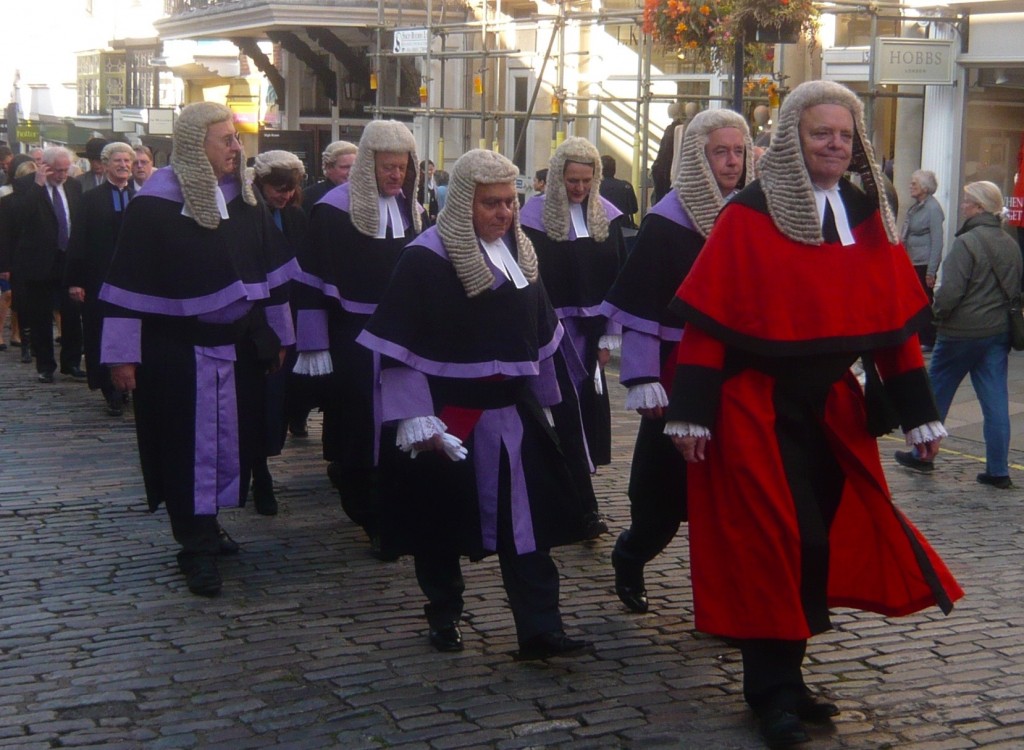








Pauline Searle
October 5, 2015 at 10:56 am
It was wonderful to see Hon Freeman Bill Bellerby take part in the procession. He is a true inspiration to us all.